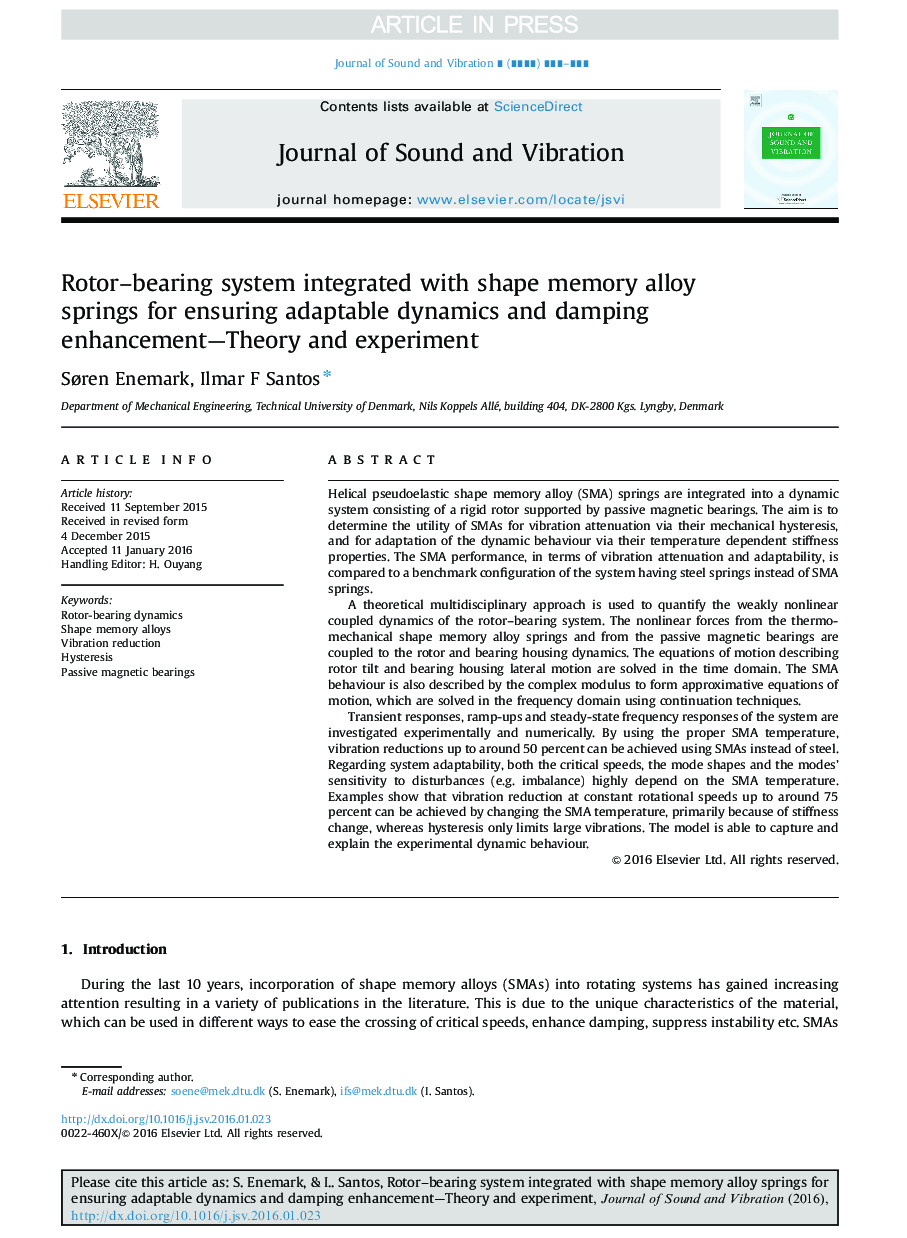| Article ID | Journal | Published Year | Pages | File Type |
|---|---|---|---|---|
| 6754572 | Journal of Sound and Vibration | 2016 | 21 Pages |
Abstract
Transient responses, ramp-ups and steady-state frequency responses of the system are investigated experimentally and numerically. By using the proper SMA temperature, vibration reductions up to around 50 percent can be achieved using SMAs instead of steel. Regarding system adaptability, both the critical speeds, the mode shapes and the modes' sensitivity to disturbances (e.g. imbalance) highly depend on the SMA temperature. Examples show that vibration reduction at constant rotational speeds up to around 75 percent can be achieved by changing the SMA temperature, primarily because of stiffness change, whereas hysteresis only limits large vibrations. The model is able to capture and explain the experimental dynamic behaviour.
Related Topics
Physical Sciences and Engineering
Engineering
Civil and Structural Engineering
Authors
Søren Enemark, Ilmar F Santos,
